I belong to several Facebook knitting groups. One thing that stands out for me as a designer is the number of times knitters vent their frustration about the patterns they are trying to knit.
The common thread is twofold: They don’t understand the pattern instructions or the pattern does not make sense to them.
Too often, when I look at the snippet of pattern that is causing them grief, the problem lies in the hand of the designer.
And that is a big worry.
When a knitting designer publishes a pattern, they are saying their promise is delivering a pattern that, with all things being equal, when they have finished, the knitter will feel good about themselves and wear the garment with pride.
And, they will love knitting it.
When there is a glitch in the process, the knitter is left confused, frustrated and the joy of exploring their creativity is diminished.
What can a designer do to mitigate this glitch?
One word: Clarity.
Clarity in the promise they are giving to their knitters – and making sure they live up to that promise.
In my work, I strive to do three things
- Clear instructions
- Separate instructions for different sizes, particularly in sleeve instructions
- A full sizing table as well as a visual semantic
Using Skyline Rose pattern as an example, let me explain:
Clear instructions mean:
Back bands
With 3.75mm needles, cast on 133 [140, 147, 154, 161] stitches plus 2 selvedge stitches at each end
Total stitches: 135 [142, 149, 156, 163] stitches
Beginning a lace pattern:
Rep from * to * 20x more [105 stitches]
Armhole decreases:
Begins on row 11 of v-pattern ie 5 rows before completion of v-pattern
Arm increase on sleeve:
Increase one stitch at each end of work on row: 7, 13, 21, 27, 35, 41, 49, 55, 63, 69, 77, 83, 91, 97, 103 [All knit rows]
Separate instructions for different sizes
Sleeve instructions for arm increase/armhole match/ bell curve are given together in their separate sizes. For example: size 34 has arm increase, armhole match and bell curve instructions following on from each other.
What’s also important is the conversation between designers and knitters. A conversation that needs to be mutual and on-going.
- Let me know if you have problems
- How can I help you in your knitting?
- Let me see the results and share with you your delight in creativity
In short, let’s talk.
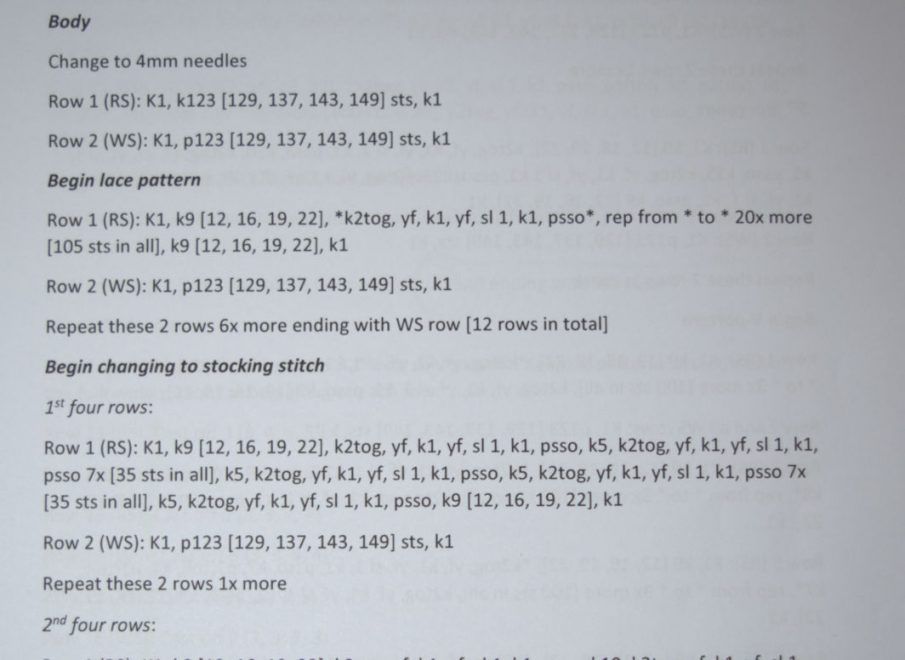

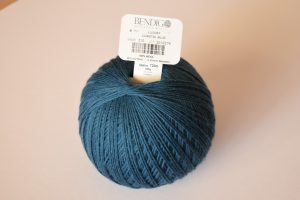
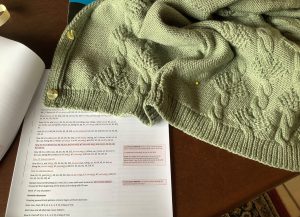
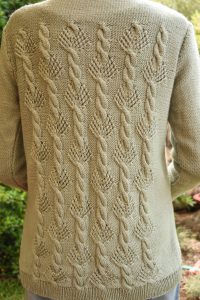
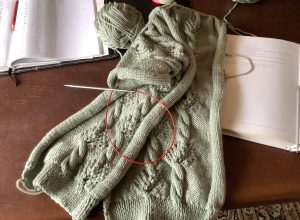
Comments
Hi Linda, I still haven’t decided on a project and am procrastinating. I also agree that sometimes patterns can be very unclear, especially for beginners and that can affect the pleasure of knitting.
Author
Hi Sue, when you are ready…..